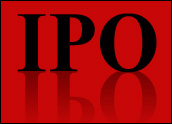
Hoping to overcome sizable hurdles such as a volatile stock market and uncertain economy, Current Media — the money-losing, multichannel media company cofounded by former Vice President and Nobel Peace Prize winner Al Gore — has filed for an initial public offering.
Current Media, which operates a Web site as well as a television network, estimated in a filing with the Securities and Exchange Commission that its offering could raise up to US$100 million, though that figure is included mainly to help calculate filing fees.
The initial filing does not specify per-share pricing or set a time frame for the offering to take place.
Connecting With Others
Current does say in the filing that it will use proceeds for operating expenses and growth plans and to help it repay debt it has accrued since being launched in 2005 by Gore and cofounder Joel Hyatt. As of the end of 2007, that debt stood at $36.5 million.
Current Media operates a youth-focused cable television channel that currently reaches about 51 million homes in the U.S. and the UK as well as the Current.com Web site, where video and other content focuses on politics and current events.
The Web property also has a social networking element, enabling users to connect with others with similar interests and to evaluate and rank video content, as well as an activism element, with links to sites where users can make donations to various causes.
Still Losing Money
Current Media has seen its revenue increase significantly but is still a money losing operation, according to the SEC filing. The company had 2007 revenues of $63.8 million, up 68 percent from $37.9 million the year before, but remained in the red, posting a loss of $17.1 million, up from $14.3 million the year before.
While it maintains professional video production capabilities, Current said a third of the content it shows on its cable network is user-generated video submitted through its Web site and selected through rankings by fellow users.
The financial appeal of the site may be its ability to reach the 18-to-34-year-old age group, a demographic advertisers are chasing beyond traditional television into new media formats, from Web sites to interactive video games. Gore has said he believes Current can be the first site to create a two-screen experience, with users literally using both TV and laptop at the same time to both consume and interact with content.
“We believe there is a significant gap between what is being delivered by traditional sources of TV and what is demanded by young adults,” Current’s SEC filing states. “Young adults need and want news and information about what is going on in their world; however, they have not had a news and information source on TV that speaks to them. Young adults increasingly are turning to other platforms, especially the Internet, for news and information.”
The result is a “large market opportunity to develop an integrated media platform capable of cost-effectively engaging young adults around news, information and lifestyle entertainment, and to build a brand premised on communicating what is going on in the lives of this young-adult generation. There is demand from both young adults and the advertisers.”
Chilly Market
Even before the stock market’s recent woes, relatively few tech IPOs have been staged over the past year, and few of those have been anything near blockbusters. Last summer, EMC successfully spun off VMware in one of the year’s biggest offerings. Late in the year, Software as a Service provider NetSuite raised $161 million with its own IPO.
By contrast, United Online canceled its Classmates.com IPO in December, despite the surge of interest in social networking.
Current’s challenge is to build an audience and keep it tuning into the cable side of the business, where traditional video advertising can be applied, even as it finds ways to make its Web operations profitable as well, said Gartner analyst Mike McGuire.
“Having a reliable audience in its target age group would be valuable to a lot of advertisers,” McGuire told the E-Commerce Times.
Last year, Current TV won some credibility by earning an Emmy Award — becoming the youngest network ever to achieve that honor.
The timing of the filing may suggest that the company feels the economy and stock market will turn positive again later in the year, since such initial registrations often predate actual IPOs by several months.
Looking for the Next Upswing?
On the other hand, many companies that file S-1 statements with the SEC never conduct their offering. More than 20 companies have canceled IPOs during the past month, citing the plunging stock market.
The filing may be a sign that the company is looking ahead to the next upswing and wants to be in a position to move through the first window that becomes available. The recent lull in the market may have sapped the some of the speculative energy around next-generation Web and media plays, but it’s likely significant interest in that area remains, Tom Arnold, an assistant professor of finance at the University of Richmond’s Robins School of Business, told the E-Commerce Times.
Getting closer to profitability may be a more pressing concern than the overall market anyway. “Today’s investors are still mindful of what happened in the last speculative dot-com stock bubble,” Arnold added. “They’re going to be look at the fundamentals much more closely.”
Another possibility is that a more established media company acquires Current before the offering takes place. Logical suitors might include Viacom, whose holdings include youth-focused properties such as MTV, or Time Warner, which could integrate both the online and cable network parts of the business easily. Filing the S-1 may help energize some of those companies to begin considering an acquisition bid.






















































Social Media
See all Social Media